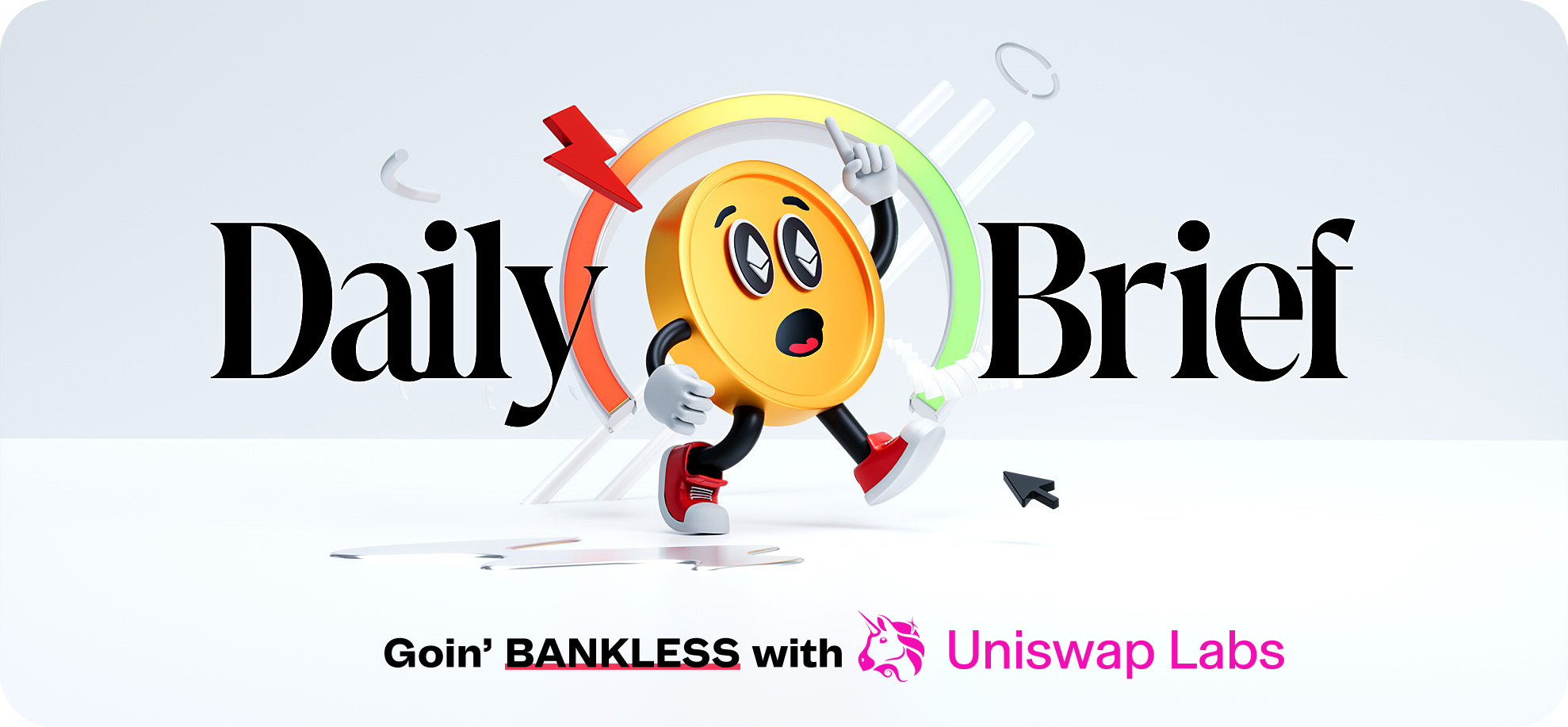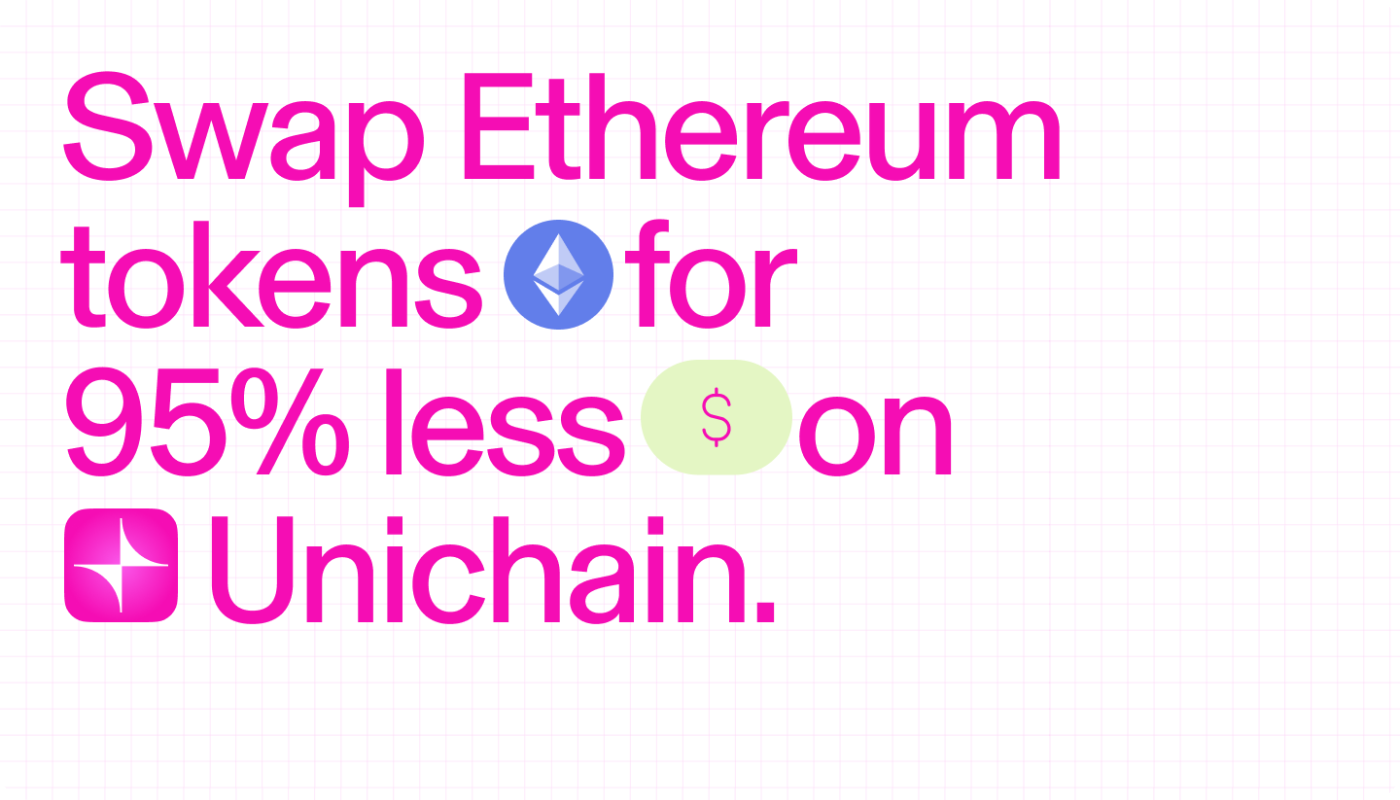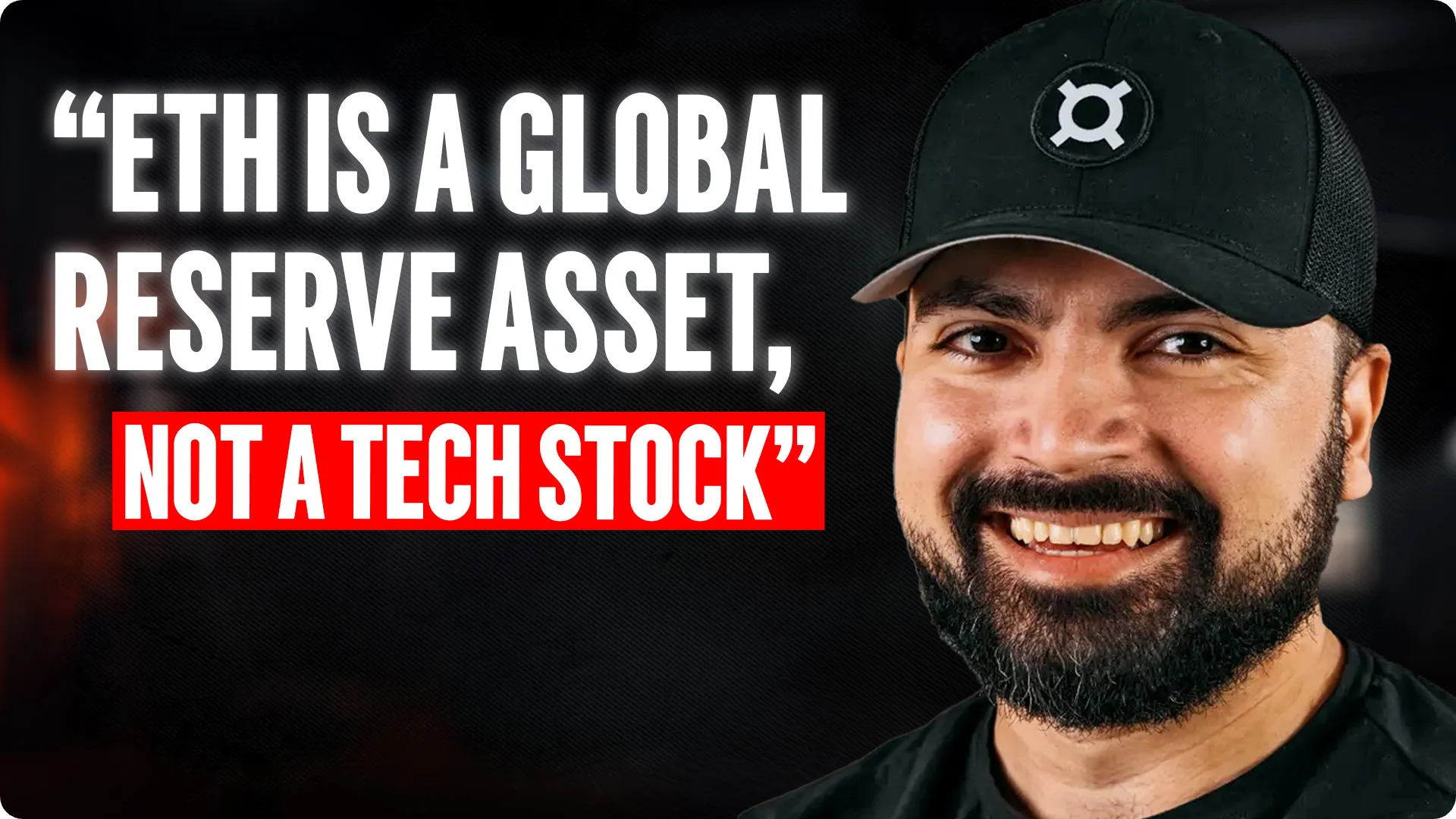Ethereum’s Biggest Mistake


View in Browser
Sponsor: Uniswap Labs — Unichain is live! Bridge & swap with Uniswap Labs' web app or wallet.

- 👟 Nike Facing Class Action Suit Over RTFKT NFT Drop. The $5M suit alleges that Nike rug-pulled its unregistered securities by shutting down the subsidiary.
- 💸 Strategy Loads Up Again with $1.4B Bitcoin Buy. With yet another major BTC acquisition, Strategy is now well past $50B in bitcoin holdings.
- 🇺🇸 Crypto Lender Nexo Returns to U.S. The Bulgarian lender cites the Trump Admin's crypto-friendly policy as the reason for the return.
| Prices as of 5pm ET | 24hr | 7d |

|
Crypto $2.976T | ↗ 0.1% | ↗ 8.4% |

|
BTC $94,418 | ↗ 0.2% | ↗ 8.3% |

|
ETH $1,782 | ↘ 0.9% | ↗ 13.0% |

The 2024 U.S. election season sparked a genuine frenzy around prediction markets, with Polymarket emerging as the undisputed epicenter of betting activity. Bloomberg incorporated Polymarket on its terminal. Reports emerged that the Trump campaign was actively monitoring Polymarket odds in real-time. Around $3.7B in election contracts were traded across the market throughout the course of the year.
This success triggered a gold rush, with entrepreneurs and developers rushing to spin up their prediction market clones to capture even a fraction of the excitement. Yet despite this deluge of new entrants, none managed to gain meaningful traction against the dominant platform.
Of the $162M total value locked (TVL) across prediction markets tracked by DefiLlama today, Polymarket still single-handedly commands ~85%. However, its TVL has declined from the peaks seen during the election cycle, when daily active wallets reached 50,000, daily transactions surpassed 500,000, and trading volume hit $350M on November 6th alone. With such remarkable metrics, many watching questioned whether Polymarket could sustain this momentum after the ballots were counted.
Now six months post-election, Polymarket's trajectory defies skeptics, revealing a resilience that sets the stage for its next chapter.
who would’ve predicted this pic.twitter.com/Sw5WmjuUlV
— Shayne Coplan 🦅 (@shayne_coplan) October 17, 2024
How has Polymarket fared since the Election?
The ghost of the Augur prediction market platform loomed large over Polymarket heading into 2025. For those with shorter memories, Augur enjoyed its moment in the sun during the 2020 elections before suffering a catastrophic collapse once the votes were counted. Total value plummeted 20x in ETH terms — from 19,000 ETH to 700 ETH — as users fled the platform en masse. Worse still, market resolutions dragged on due to legal disputes and design flaws, leaving the few remaining users frustrated and eyeing the exits.
But Polymarket hasn’t had this problem.
Instead of watching its user base evaporate, Polymarket has managed something far more impressive: a genuine pivot. Users initially drawn by Trump vs. Harris predictions have smoothly transitioned to Federal Reserve interest rate decisions, geopolitical conflicts, token price movements, and — perhaps most significantly — sports betting markets.
What's particularly telling is the dramatic increase in daily wallets that never engaged with US-related markets at all. These users now represent roughly a quarter of all activity on Polymarket — a significant and healthy shift in user composition that has helped the platform maintain surprising stability as election-focused bettors naturally scaled back.
Other interesting data here:
- Cumulative users remain around the same as in mid to late October last year, when election activity was ramping up.
- Monthly active traders as of April 1st stands at the same levels as November last year.
Trading volume tells a similar story, holding consistently between $20-$30M a day over the past three months. While it’s certainly decreased since the highs, it remains around the same level as last September.
How accurate is Polymarket?
Beyond retaining its user base post-election, Polymarket has also recently garnered attention for its predictive accuracy, as suggested by data scientist Alex McCullough's analysis.
McCullough claims Polymarket achieves up to 94% accuracy, excluding bets that were almost a sure thing (over 90% likely) or super unlikely (under 10%), when the outcome was basically clear but not official. Among other findings from his research (all recorded here) are that:
- Markets Overestimate Yes: The platform sometimes overestimates probabilities of events, potentially due to crowd bias, thin liquidity, or speculative risk-seeking bets, raising questions about its reliability.
- Sports Betting Is Most Accurate: Sports markets, the fastest growing section of the platform, stand out as Polymarket’s most consistent predictors, with balanced betting, clear criteria, and nearly $4.5B in volume. This may be skewing the platform’s overall predictive capabilities across other markets.
- Long-Term Predictions Look Better Than They Are: Long-term markets often include outcomes that become obvious "No" answers over time. In his interview with Polymarket, McCullough cites the example of markets like "Will Gavin Newsom become president in 2024?" that stayed open for months, but became increasingly clear this wouldn't happen. These extreme cases make Polymarket's overall accuracy look better than it really is because these near-certain outcomes get counted in the platform's prediction record.
Overall, Polymarket’s ongoing activity suggests it’s more than a one-hit wonder, but its reliability as a predictor warrants cautious optimism pending deeper scrutiny.
Are these actionable insights?
While we may need more analysis to truly confirm Polymarket’s accuracy, McCullough’s analysis surfaces interesting, actionable trends in how these markets operate which anyone can use to refine their strategy for placing bets. Below are some key takeaways from his research, which could prove insightful to those active on Polymarket:
- Most markets end in "No." About 3 out of 4 questions resolve "No." Keep this in mind, as you scour opportunities for potentially underpriced "No" shares.
- Best prices to bet "No." When "Yes" is priced between $0.20 and $0.50, history says the true chance is lower. Buying "No" here has given the biggest upside. The advantage shrinks but still exists up to about $0.80.
- Prices near the edges are fair. If "Yes" costs less than $0.10 or more than $0.95, it's already close to correct. Any gain is small once you pay fees.
- Timing can be used to your benefit.
- More than four hours before the market closes: "Yes" is usually overpriced → buy "No."
- Last four hours: Prices tighten and become accurate → only buy "Yes" now if you like that side.
- If you hold "No," think about selling it back before the final hour — prices can bounce around right at the end.
- The data for sports markets can look different.
- One day before the game: Accuracy is around 66%. Good spot to buy "No."
- After the game starts: Accuracy climbs and hits 94% two hours in.
- Prices often jump every 30 minutes (30, 60, 90, 120 min), meaning these may be useful times to adjust or place bets.
- Traders like betting "Yes." Traders prefer betting on things to happen, follow hype, and markets can be thin. Placing calm limit orders helps you avoid overpaying.

Unlock the power of Unichain – a fast, decentralized Ethereum Layer 2 network built to be the home for DeFi and cross-chain liquidity. To bridge tokens to Unichain and start swapping today, get started with Uniswap Labs’ web app or mobile wallet.

Ethereum has achieved groundbreaking technological success, but has it failed to properly define ETH the asset?
In this episode, Frax founder Sam Kazemian joins us to discuss what he believes is Ethereum’s biggest mistake: confusing ETH, the asset, with Ethereum, the technology. Sam argues that post-EIP-1559 and Proof of Stake, ETH unintentionally shifted toward a discounted cash flow (DCF) valuation model, undermining its potential as a commodity-like store of value.
We explore how the Ethereum community can reclaim a stronger narrative around ETH and why social consensus — not just tech — determines an asset’s destiny.
Listen to the full episode👇